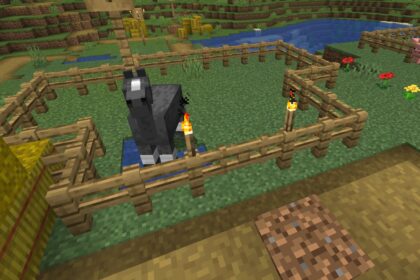Gathering every pet possible in Minecraft can sometimes be a fun goal to work toward.
While we all know about cats in Villages, there is another kind of feline that you can come across in the wild that you can tame as a pet.
Ocelots are a wild feline animal that can be found in Minecraft, tamed, and bred, similarly to cat. However they are known for their very skittish temperament, so sometimes taming them can be a real hassle.
In this article we will teach you of the right way to approach a wild Ocelot so you may take it home with you.
Finding Ocelots in Minecraft
Ocelots are somewhat rare to come across. That is because they can only be found in specific biomes, not to mention they can be very illusive and avoid players completely.
Depending on the version you play, you will likely find an Ocelot in any jungle biome (on Bedrock Edition) or only in the regular jungle biome and it’s bamboo variant in Java Edition. This means Java excludes sparse jungles and jungle meadows.

The best way to find an ocelot is to use your ears. Even if you do not see an ocelot running you may hear it meowing!
Try to notice the ocelot before it notices you.
It is advised you do not run too much and walk around carefully. Ocelots are timid and will run away from anyone who is moving too fast, even if you have food to offer them. This behavior is identical to cats you see in villages.
Taming Ocelots in Minecraft
Taming an ocelot in Minecraft is identical to taming a cat.
You will have to be patient and careful. Like we have mentioned, sudden movements can spook ocelots and leave them running away from you.
When you come close to an ocelot crouch down with a raw cod or raw salmon in your hand, both of which can be fished in any body of water. This item will make it curious and it will slowly begin to approach you.

If you move your head too fast or move at all, the ocelot will get scared and run away.
Once the ocelot is close enough for you to click on it you can feed it the raw fish. This will in turn raise its ‘trust’. On average it takes between one and 3 raw cod or salmon until an ocelot fully trusts you.
You will know you have gained its trust and tamed the ocelot when heart particles fly around it.
With the ocelot tamed you will no longer have to worry about it running away from you. However, they will not follow you the same way a tamed wolf or cat would.
However, you can luckily breed them. If you have another tamed ocelot you can breed them together to make more. Each kitten you get from tamed ocelots will also in turn be tamed from the start.
Benefits of Taming Ocelots
Just like with wolves, who will loyally protect you from aggressive mobs when tamed, ocelots also provide their own set of benefits with the people they trust.
Just like cats, an ocelot can protect you from both creepers and phantoms.
Both of these mobs will stay away from them, with creepers staying away 6 blocks and phantoms 16 blocks away from an ocelot.
This means that having one around you or your base will keep you safe from any sudden explosions or attacks that you may not be prepared for.

Ocelots and Cats
It is important to note that, while similar in looks and behavior, cats and ocelots are not the same thing.
In all Minecraft versions that were released before 1.14. treated ocelots similar to wolves. Once they were tamed an ocelot would turn into a cat, displaying a variety of colors or textures at random.
Since the release of the 1.14. update cats and ocelots have become completely separate animals.
Taming an ocelot will no longer turn it into a cat. Instead cats can now be found in villages and tamed there.

If you are playing on older versions of the game then you may come across this when trying to tame your ocelot. The behavior and gameplay remains the same, but the ocelot simply turns into a cat instead of staying the same.
Cats can also spawn in player-made villages, so if you want to create your very own source of fluffy feline friends consider building a village from scratch!
There are many ways to do so and it is a fun activity to do to get your city-planning in practice.







